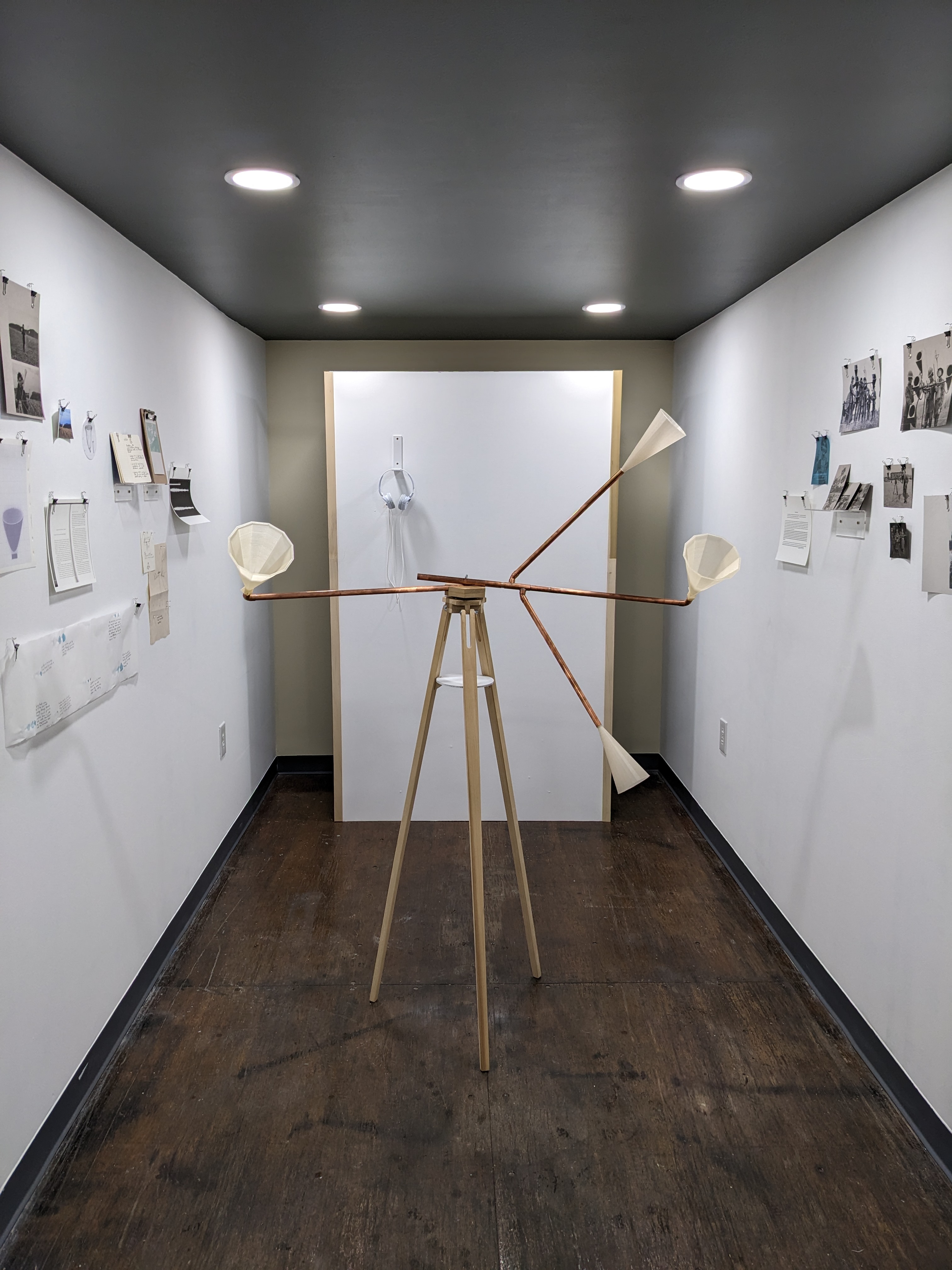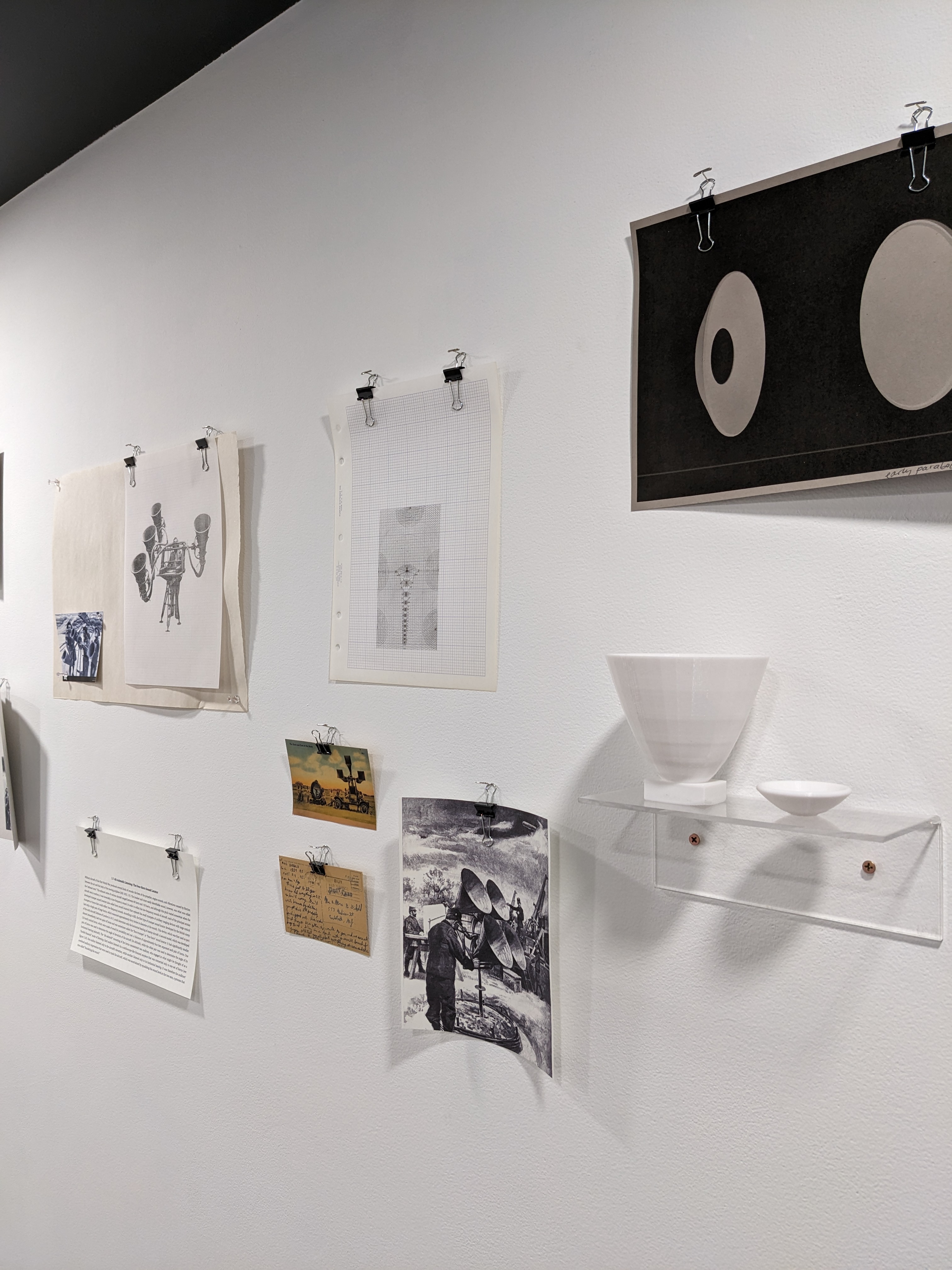“We shape our tools, and thereafter our tools shape us.” - Winston Churchill
Our behaviors, attitudes, society, and culture are unconsciously shaped by the technologies we use. But, who is doing the shaping? The work in this exhibition questions and reimagines the values of early acoustic listening machines that paved the way for the digital ones we live with today. Originally the colonizing product of military funding during WWI, these listening devices were developed to prioritize the sounds of enemy machinery and human presence with the goal of dominating another.
Placed in a speculative past, this series of reimagined listening sculptures propose a world in which these machines were trained to instead amplify the natural world. Sensitizing us to secret processes of existence that are abound in the natural landscape, yet often go unheard or are drowned out by human language and presence – an insect crawling, a stream of water flowing, the whisper of grass growing. Driven by pluralistic and non-hierchical values, these machines seek only to understand the local, surrounding environment in which they find themselves. In turn, creating a deeper awareness of the more than human worlds amongst us.
By peering into our technological past, we become better equipped to understand their impact in the present. And more capable of imagining preferred versions for our future.
Our behaviors, attitudes, society, and culture are unconsciously shaped by the technologies we use. But, who is doing the shaping? The work in this exhibition questions and reimagines the values of early acoustic listening machines that paved the way for the digital ones we live with today. Originally the colonizing product of military funding during WWI, these listening devices were developed to prioritize the sounds of enemy machinery and human presence with the goal of dominating another.
Placed in a speculative past, this series of reimagined listening sculptures propose a world in which these machines were trained to instead amplify the natural world. Sensitizing us to secret processes of existence that are abound in the natural landscape, yet often go unheard or are drowned out by human language and presence – an insect crawling, a stream of water flowing, the whisper of grass growing. Driven by pluralistic and non-hierchical values, these machines seek only to understand the local, surrounding environment in which they find themselves. In turn, creating a deeper awareness of the more than human worlds amongst us.
By peering into our technological past, we become better equipped to understand their impact in the present. And more capable of imagining preferred versions for our future.











